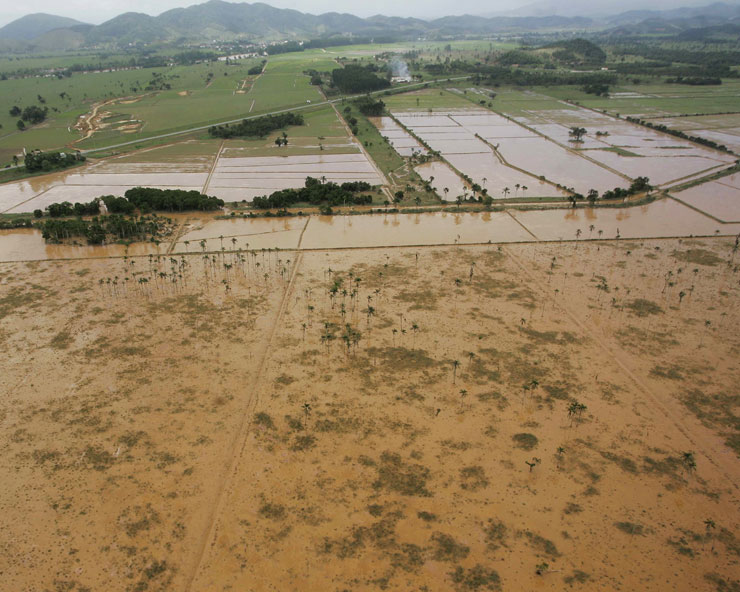One thing that many fear is the unexpected – especially when it could affect your farm and livestock. There are ways to prepare for a disaster and its aftermath. If you are a farmer or rancher looking to create one of those plans, check out some tips and resources below!
Farm Information
When planning for an emergency, remember that those responding or providing aid may not be familiar with the farm or ranch. Providing easily accessible maps, herd information, and building information will allow for a quicker response. Map out your farm using satellite or aerial maps. It is important to identify structures, pastures, pasture gates/entrances, roads, water sources, wooded areas, animal species, and crop types in specific areas. Remember to update those maps as crops and livestock areas often change annually.
While it is very important to note the location of livestock, keeping a detailed herd inventory with your farm maps and information is also important. Information such as inventory numbers, animal IDs, and any health papers can be very beneficial in an emergency, especially when animals need to be identified quickly.
Emergency Contacts
Disasters and emergencies happen suddenly, often without much warning. Keep a large list of potentially important contacts on hand for a more rapid response. You may find it handy to have a large group chat or social media message prepared ahead of time that can be sent to all farm managers and workers, your family, and people who can help in a disaster.
Contacts that should be included on this list include:
– Police department
– Fire/EMS department
– Veterinarian
– Insurance agent
– Bank/financial advisor
– Farm workers
– Animal owners (if animals are boarded on your farm)
– Feed supplier
– Carcass disposal service
Animal Care
In an emergency, you or the main animal caretakers may be unavailable. Information such as feed directions, animal medication directions, feed supply orders, and equipment instructions should be kept on farms and written in plain language so almost any animal caretaker can understand and follow directions. Information on the medical history of animals should also be supplied for veterinarian reference in case of animal injuries. While this may not always be necessary, keep an evacuation plan for livestock and farm workers. This will help prevent additional stress during a disaster.
Finding the needed feed to fit your program in case of a feed shortage or emergency can be difficult for organic or alternative farmers. Take care to keep extra feed on hand when possible and keep a list of additional feed suppliers that carry organic feed.
No matter the emergency or disaster, keeping emergency plans in place helps prevent additional damage and stress. These plans can help you, emergency personnel, farm workers, and family react quickly in the face of an emergency. Planning for different emergencies will benefit your farm and livestock, so consider creating multiple plans that fit your region and farm. In addition to the emergency planning resources below, check out the Disease Prevention Plan created by The Livestock Project that can benefit any livestock farm.
Resources:
- PSU: Building an Emergency Response Plan for Livestock Producers
- America Family Insurance: Farm Emergency Management Plan Tips
- NCAGR: Farm Emergency Plan Template
- UMN: Creating farm emergency action plans
- Prep4agthreats: Farm Emergency Preparedness Planning
- USDA: Farm Emergency Preparedness Plan
- CFSPH: Emergency Action Plan
- Get Prepared: Emergency Preparedness for Farm Animals

